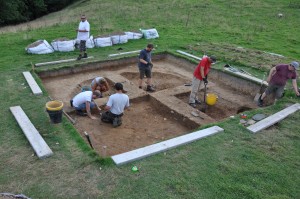
A “dig” is what archeologists call the process of uncovering artifacts. You can also use this tool in the backyard when investigating a field of bugs, insects, and other invertebrates!
The quadrant is divided into smaller sections by pieces of string tied at regular intervals. Where the string intersects, it creates square sections that can be easily labeled and referred to in a research notebook.
This way, when the scientists return to their labs they can remember exactly where they found everything—a very important part of the science of archeology!
[am4show have=’p8;p9;p28;p55;’ guest_error=’Guest error message’ user_error=’User error message’ ]
Here’s how archaeologists make before their next dig (I’ll show you how to make a quicker version in a minute):
- 20 feet of cheap, ¾ inch PVC piping (there’s no need to get the good stuff—the cheapest you can find will work).
- PVC elbows
- PVC glue (work in a well ventilated area).
- A saw.
- String.
- Drill with a small bit.
- Tape measure.
Let’s make it!
- Cut the pipe into four 39 inch pieces.
- On a flat surface, create a square with the PVC using the elbows and the glue. Make sure that the square is in one plane.
- Drill holes in the pipes at the midpoint, and at ½ and ¾. Drill all the way through. Connect the opposing holes with string. You should end up with 16 equal sections.
And now… they excavate!
Now, this is usually overkill for most kid archaeologists. To make a simpler version, substitute sticks or yardsticks for the PVC pipe, and secure the string grid around the rulers. If you really want, you can simply lay the string on the ground and skip the frame altogether.
[/am4show]

